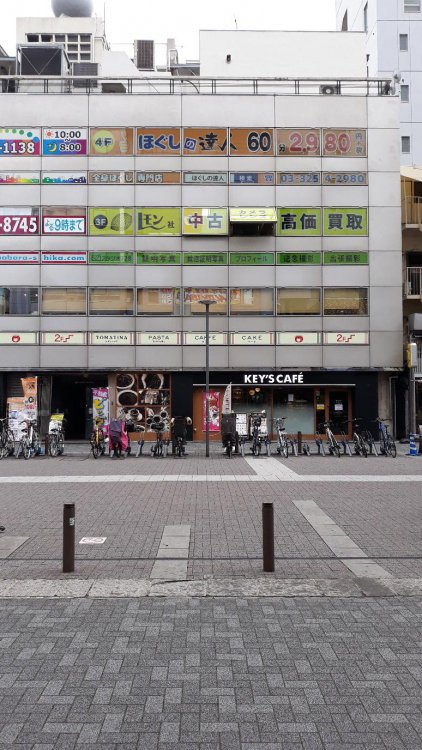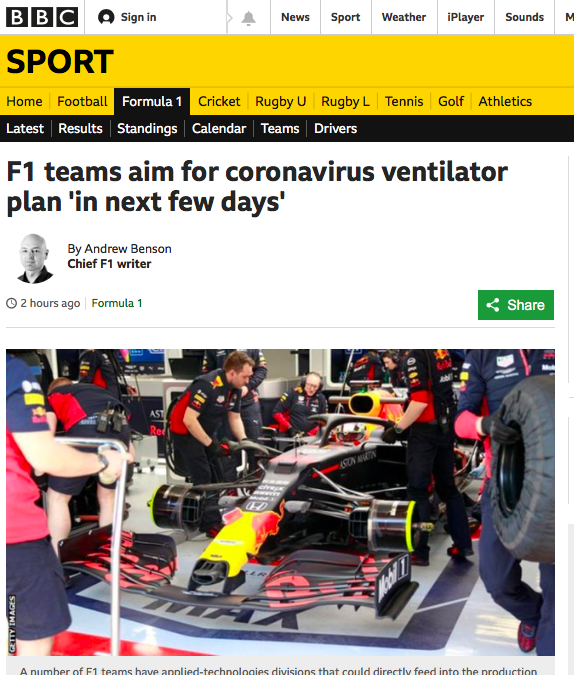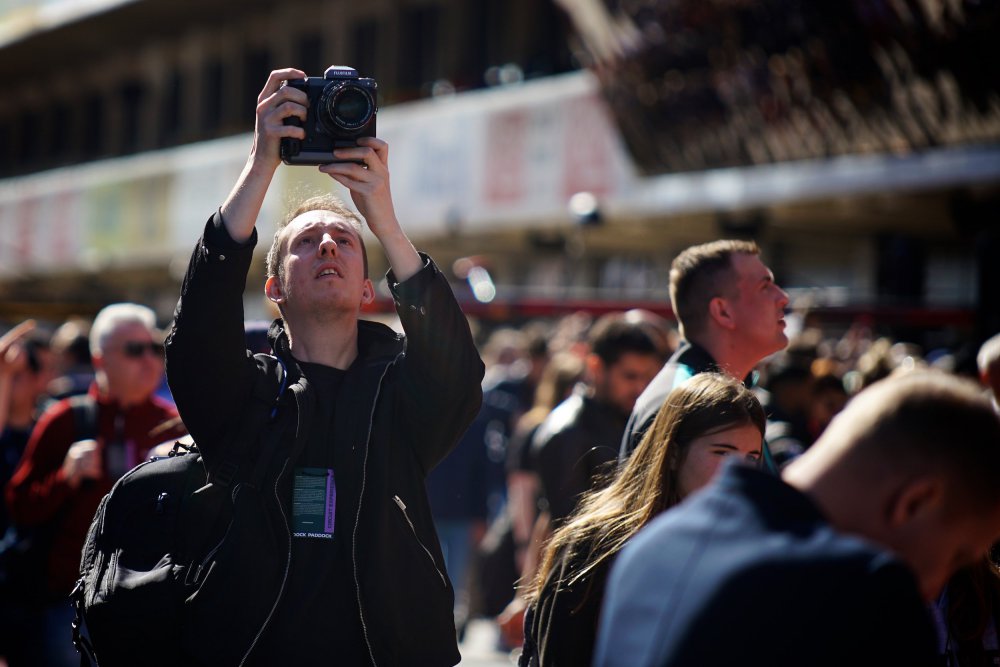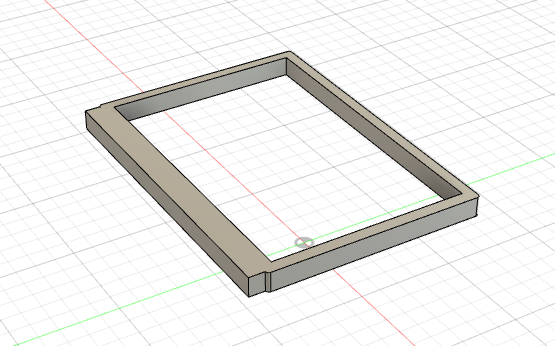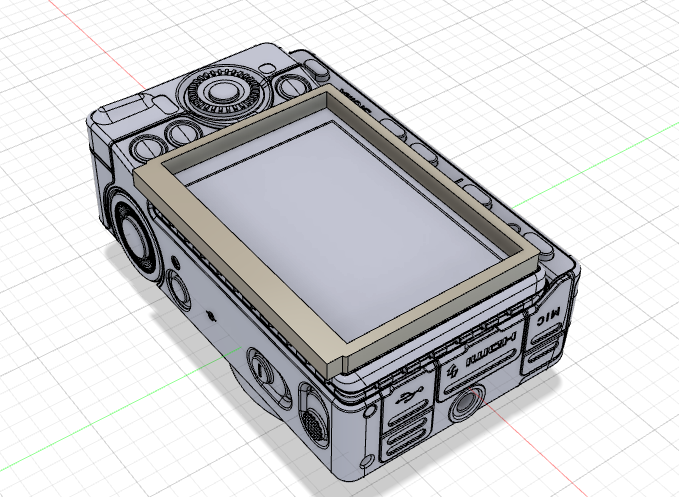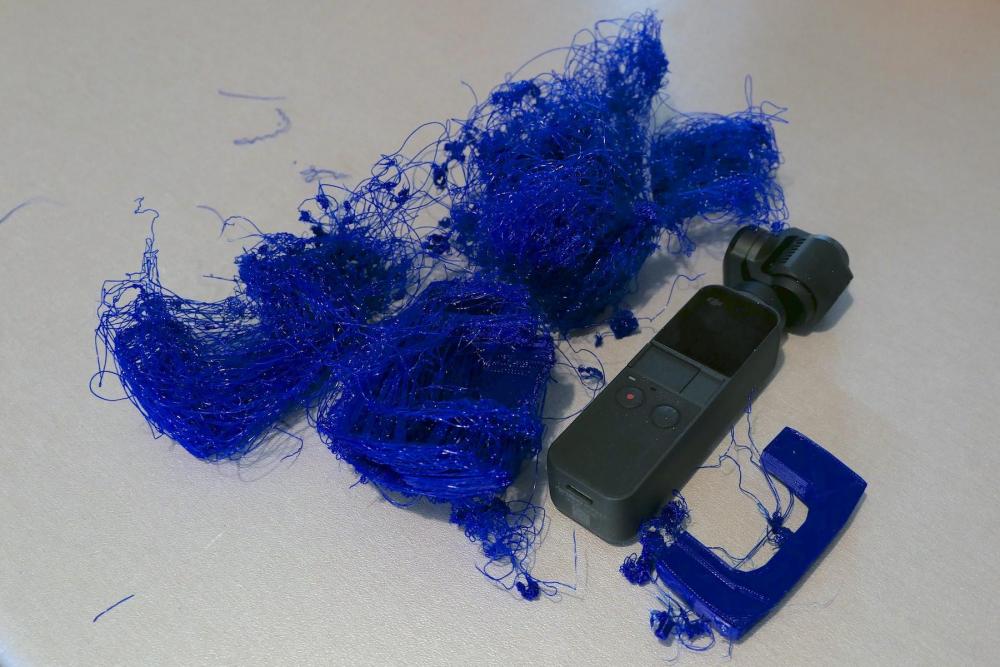-
Posts
6,097 -
Joined
-
Last visited
Content Type
Profiles
Forums
Articles
Everything posted by BTM_Pix
-

Skateboarding empty LA streets during the pandemic lockdown
BTM_Pix replied to Andrew - EOSHD's topic in Cameras
It actually has the potential to be a good multi message public information film. Stay off the streets during a lockdown because a dickhead might run you over, check your blindspot before opening your door in case there is a dickhead approaching and you madam put that cigarette out in case the dickhead lands next to you and cries all over social media about you being a health hazard. -

EOSHD in lockdown in Barcelona - photos from Coronavirus ghost town
BTM_Pix replied to Andrew - EOSHD's topic in Cameras
The weird thing is that in the UK at least there seems no way of convincing people to stop the phenomenon. Like a lot of stuff over the past few years, its like everyone has read some sort of viral Facebook post about it that had a grain of truth (diarrhoea is a symptom though a much less common one) which was then honed in on and now there is no talking them down from their position. Its now of course become a self-fulfilling prophecy as it has fed panic buying from people who know full well that it is senseless but are now caught up in it themselves because of the shortage. The two other countries that I have been in/am during this have not had the same behaviour so I can only presume if its happening in the US as well that the Facebook post must have been in English We got mercilessly mocked by numerous members of our family (and the plumber who instated it!) for getting one of these a couple of years ago but as Guy Martin says here our trumping gear has never been cleaner. -

Skateboarding empty LA streets during the pandemic lockdown
BTM_Pix replied to Andrew - EOSHD's topic in Cameras
Yes. Vodafone.tv, signage in cyrillic script and the CCTV/security company sign above the fire extinguisher is a Greek company. -

Skateboarding empty LA streets during the pandemic lockdown
BTM_Pix replied to Andrew - EOSHD's topic in Cameras
Still funny though -

Skateboarding empty LA streets during the pandemic lockdown
BTM_Pix replied to Andrew - EOSHD's topic in Cameras
To be fair, that picture is from a shop in Greece. -

Skateboarding empty LA streets during the pandemic lockdown
BTM_Pix replied to Andrew - EOSHD's topic in Cameras
I'll start by saying that that is a great film. But is there anything more 2020 than trying to capitalise on a global crisis that is literally killing people by click baiting a six year old video? This video is also doing the rounds after being re-purposed by a lot of people who are desperate for clicks on social media pretending it was taken during whatever passed for a lockdown in London when it was actually just pre-virus dickheadery. Fair play though, the woman's reaction at the end is gold. -
That is so lovely @Anaconda_ Just before watching this I had been speaking to my daughter who is about to go to hospital to start her shift as a midwife and I'm not going to lie I am absolutely shitting myself about her uncertain welfare in work encountering this virus. The feeling of helplessness over that is particularly acute as we are in different countries. Watching your film actually got me very emotional considering how much more of those things that I should have done with my own daughter at that age. So keep making more of these and turn whatever degree of isolation you are having to observe there into the opportunity to make more great memories like this. But for the love of God, if you are going to do more stop motion, get a cable release for that X-T3
-

EOSHD in lockdown in Barcelona - photos from Coronavirus ghost town
BTM_Pix replied to Andrew - EOSHD's topic in Cameras
Yes, out of the Showa-dori Gate exit via the nearest ATM was the route ! -

EOSHD in lockdown in Barcelona - photos from Coronavirus ghost town
BTM_Pix replied to Andrew - EOSHD's topic in Cameras
That was pretty early in the morning though as I was pretty keen to flash someone else's cash ! -

EOSHD in lockdown in Barcelona - photos from Coronavirus ghost town
BTM_Pix replied to Andrew - EOSHD's topic in Cameras
Akihabara. -

EOSHD in lockdown in Barcelona - photos from Coronavirus ghost town
BTM_Pix replied to Andrew - EOSHD's topic in Cameras
Somewhere in this buikding is the branch I got your Contax Zeiss 35-70mm from. The one you will get in 6-8 months depending on the plague ! Its almost like they don't want us to find lens bargains! -
Clearly the F1 teams are following the forum Great news. https://www.bbc.co.uk/sport/formula1/51975690
-

EOSHD in lockdown in Barcelona - photos from Coronavirus ghost town
BTM_Pix replied to Andrew - EOSHD's topic in Cameras
I did warn you ! This seems like a very very very long time ago now doesn't it? I'm not sure you've got the hang of the secret part of the secret projects there mate You need to prioritise writing up the camera shop story ! -
The Sigma files are on their download page here https://www.sigma-global.com/en/cameras/fp-series/download/ For 3D printing in the UK I would recommend this company without hesitation. https://www.3dprint-uk.co.uk You just upload a .stl file to their quote page and away you go. If you are tempted by getting a 3D printer, its definitely worth looking at the resin printers such as the Elegoo Mars which offer really high print quality for the money. The process is very different as its chemical based so there is a bit more of a learning curve but its worth putting the effort in based on the results they produce. The other upside of having a 3D resin printer that I can tell you from personal experience is that should the world suddenly find itself in the middle of a pandemic where access to surgical masks, gloves and isopropyl alcohol are essential items of personal protection then by dint of having one of these resin printers you will already have these items to hand
-

EOSHD in lockdown in Barcelona - photos from Coronavirus ghost town
BTM_Pix replied to Andrew - EOSHD's topic in Cameras
He has been there long enough now that he will either need more underpants or more lenses. I'm betting he'd choose the latter. -
Sigma providing the 3D files makes it a lot easier to add your own parts. This is what your 0.5cm riser would look like and obviously you can then choose what to do with the top of it to make it marry to your preferred method of mounting.
-
So, radio stations all across Europe had a show of support and solidarity by all simultaneously playing "You'll Never Walk Alone" at 08:45 this morning. What a lovely gesture and sentiment and as a native of Liverpool and Liverpool FC fan this song has a very special meaning to me personally for multiple reasons. After the events of yesterday, I can't say the irony isn't lost on me though ! "You'll Be Arrested If You Don't Walk Alone And Quite Possibly Even If You Are Walking Alone (without a dog)" would have been more apt this morning https://www.nme.com/news/music/coronavirus-radio-stations-play-youll-never-walk-alone-at-same-time-in-show-of-solidarity-2632363
-
It hasn't been removed. His reply was to this portion of the post above his from Scott. But he has put his own post inside the quoted portion. So his response was actually : --------------- I'm getting similar. Although in my tests are as follows: 100-400 are fine. 500, 640 Flicker 800 Fine 1000-4000 Flicker 5000+ fine. And you're right..the whole first frame brighter only happens on ISO's 125-320. So weird. So for me, I'll shoot at 100, 400, 800 and 5k and up. ------------------ Scott has then responded but as he has quoted RedEpic's post its shows up a blank because its embedded in a previous reply. Clear as mud ! But that's how it has happened
-

EOSHD in lockdown in Barcelona - photos from Coronavirus ghost town
BTM_Pix replied to Andrew - EOSHD's topic in Cameras
The Specials could provide the soundtrack for much of this situation really. Starts off being spread through the International Jet Set * No one was really paying it the attention it deserves because of being too busy (working for the) Rat Race and trying to survive in the Concrete Jungle. Now everyone is locked having to Do Nothing with a lot of people saying I Can't Stand It. And no doubt You're Wondering Now (what to do, now you know this is the end) of what once was and knowing its the Dawning Of A New Era. Whatever it brings, the lesson we should all heed when we get out is to make the most of life and Enjoy Yourself (Its later thank you think). * This song from 40 years ago features the horribly prescient lyric "Spread the disease, from the south China sea to the beach hotel Malibu" -
In all seriousness I fully support the restrictions and I'm annoyed at myself for not knowing about today's addition to it. Particularly as this lunatic has now reset my own danger of exposure clock again when it was only a few days from running out by screaming in my face. The rage and hatred he had for me was incredible though as usually people only reach that point with me when we've been formally introduced at least Oh well, he'll have plenty of justification when true boredom sets in on day 13 and I fly my drone off the roof to pick up stray dog turds off the golf course and drop them all over his garden.
-
Tell me more. I've got a bit more spare time on my hands now since the walking ban!
-

EOSHD in lockdown in Barcelona - photos from Coronavirus ghost town
BTM_Pix replied to Andrew - EOSHD's topic in Cameras
Talking of pricks that are visible in that picture, the one holding the Contax Zeiss is me and is the closest I'll get to contributing to that Selfie thread on here ! -
For anyone in a country that isn't locked down, you'll love Day 6. Out on a brief exercise walk with my other half this evening (which we have been doing 3 times a day around our little empty housing complex ) we fell foul of the newly introduced additional restriction today of not walking with anyone else. On the surface it does seem a bit of a mad one for couples who are living together in isolation anyway but due to us being in isolation we didn't get informed about it directly as we would have been by the administrators of the community. So, if we'd known about it, we'd have complied. Simple as that and no problem to us because due to our Japan trip we've been practising COVID-19 awareness before it became fashionable But hey, even though we didn't know about it, ignorance is no defence so hands up and we'd take what was coming from the Police.... Except this wasn't the Police it was another resident conducting some sort of paramilitary neighbourhood watch scheme. After shouting at us about whether the security company who patrol the estate had told us about the new restrictions we said no and remarked, as you do, that it seemed daft considering we lived together but were shrugging and turning round to go home. And then it escalated beyond all reason. I have a bit of a thing where if I'm in the wrong then I have no problem with being told. You can even re-iterate what I've done wrong and I'll go along with it. But its the third time that pushes my buttons. You know the third one don't you? The one when someone is talking to you like you are a child or an idiot? Anyway, I politely(ish) informed him that I understood it the first time and the second time and there was no need to fucking repeat it again. Of course the farce of this is that due to isolation, this whole exchange was being shouted across a road at each other Anyway, he gets it into his head that I'm an arrogant prick (I'll plead the 5th on that) because I'm utterly non-plussed by his attempts to intimidate me. That wasn't because of some sort of hardman deal just that it was such an unlikely turn of events that I wasn't really reacting beyond thinking he was a complete tit. As I crossed to the middle of the empty road to re-iterate that I wasn't going to be receptive to any of the threats or abuse, he reveals the concealed Nikon DSLR to try and takes a sly pictures of us, presumably to try and "non singular walking" shame us on Facebook. Recognising that it was an utterly futile exercise to engage any further, we started to head back the 300 metres to our apartment when the frothing lunatic appears (breaking his own isolation no less) claiming that we must stop where we are to await arrest by the Police and he will personally ensure we are both fined €600 each. He had undoubtedly completely and utterly lost his mind so I told the other half to start walking back to the apartment. I started walking towards him to try give him some pause about whether he needed to dial this down because this particular arrogant prick wasn't buying it and also to put a bigger gap between him and my missus in case he did act on it. (Spoiler alert, I wasn't fully buying it but had put down a hefty deposit on it because I could see he had become unhinged, was twice my size but I'd jumped off the diving board at this point ) Plus, there was no way I was going to turn my back on him at this point ! Anyway, he whips out the phone this time to video me and then says I have to remain where I am because now he was going to arrest me I think I may have laughed at this point which sent his rage-o-meter off the charts and he was bellowing me at a distance of about 40cm. Oh dear. The self styled Isolation Warrior of Murcia had saved his community from the threat of two of its residents walking together and was now firing his frothy rage fuelled spittle all over one of them. Of course, I pointed this irony out to the camera on the video he was still recording of me and it was abruptly stopped to be replaced with more threats of physical violence at an SPL level that even AC/DC might deem to be a bit on the high side. I backed away from him slowly at this point and then turned and walked back slowly to make sure that my missus was back in the apartment in case he came after me again. Even walking slowly was an act of arrogance apparently which got his motor running again. So I sit here patiently awaiting the arrival of the Guardia Civil to take all my toilet roll money (I hope @Grimor can put in a word for me with the authorities in case they cart me away) or perhaps this lunatic might just settle for sending his dog around to perform a canine arrest on me. Of all the insults he brought forth on me, I think the worst one was him taking pictures of me with such a shitty zoom kit lens on that Nikon. From the moment I saw that, he had no chance of taking the high ground Oh and for context, this confrontation was between two middle aged British men in Spain proving that, even when we are in full lockdown isolation , we can always find new ways to lower the tone.
-

EOSHD in lockdown in Barcelona - photos from Coronavirus ghost town
BTM_Pix replied to Andrew - EOSHD's topic in Cameras
Or indeed whether you were patient zero for the outbreak in the McLaren team -
Yeah, I saw that and its really great to see it happening. I was going to offer my 3D print expertise but as this is an example of my handiwork they'd be better off using toilet roll tubes and sellotape.






